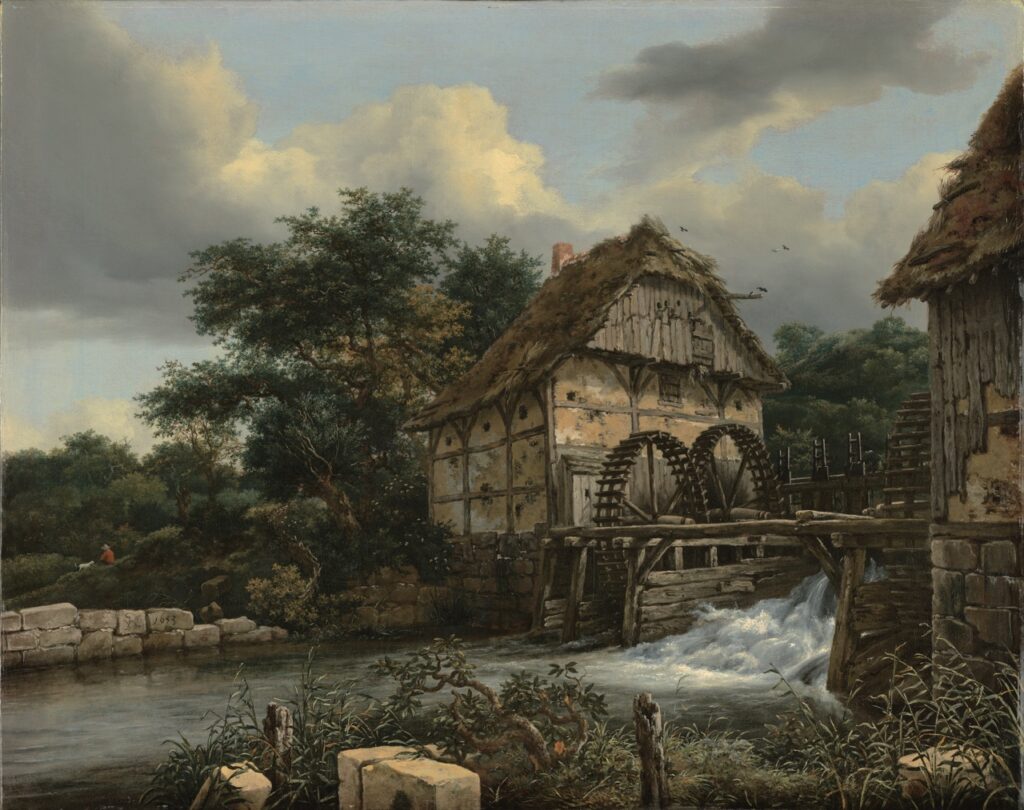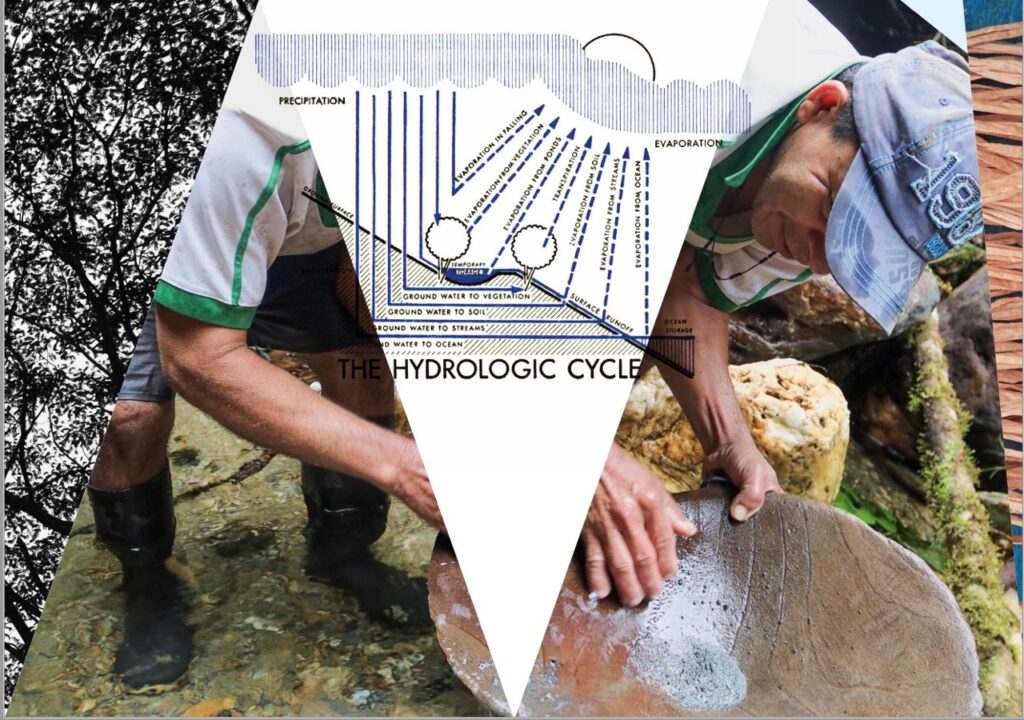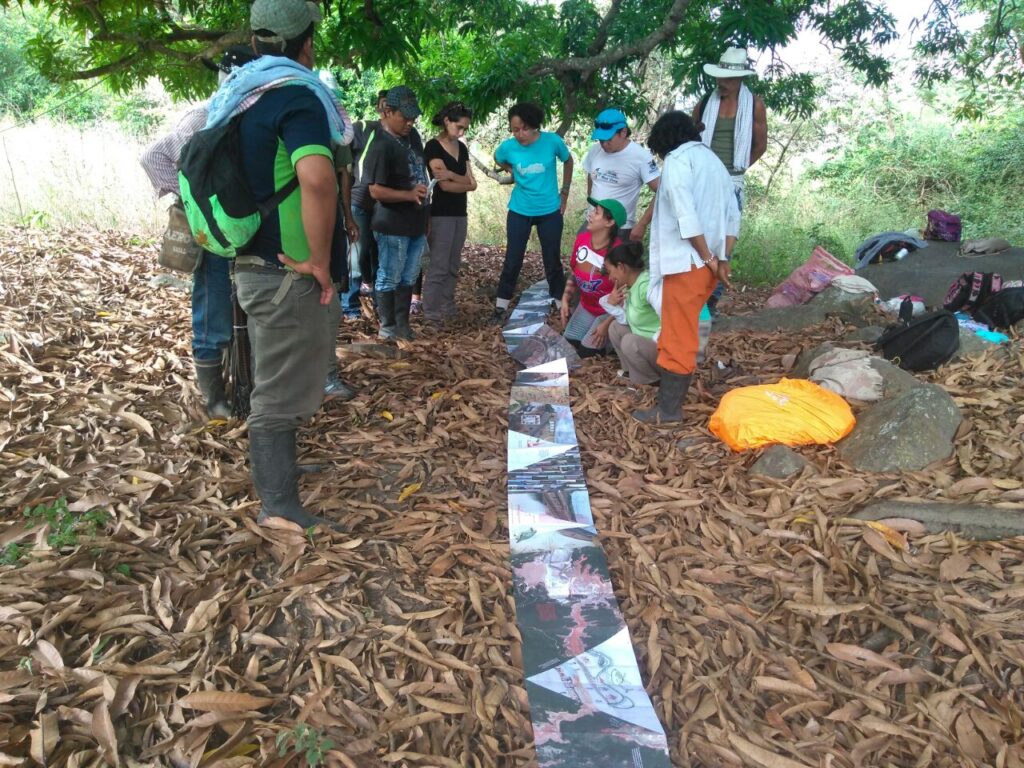

Lisa Blackmore & Liliana Gómez, eds., Liquid Ecologies in Latin American and Caribbean Art. New York: Routledge, 2020
This interdisciplinary volume brings into dialogue research on how different fluids and bodies of water are mobilised as liquid ecologies in the arts. Examining the visual arts, including multimedia installations, performance, photography, and film, the chapters place diverse fluids and systems of flow in art historical, ecocritical, and cultural analytical contexts. The contributions address a wide range of phenomena, probing the historical and political, cultural and environmental impacts of colonisation, urbanisation, and industrialisation in Latin America and the Caribbean through analyses of multimedia installations, performance, photography, film, poetry and testimony. Together, they address critical genealogies of liquids and fluidity, and analyse aesthetic interventions that mobilize and recreate different fluids and flows to restage their absence, scarcity, vital materiality, and to rethink the relationships between periphery and metropolis, and their related forms of knowledge and knowledge practices.
The book thus traces cultural histories and analyses of hydrological and hydraulic projects centred on the engineering of bodies of water and consider shifts in their semantic, sensorial, and social orders amid contexts of political and environmental violence and conflict. The dynamic movements of liquid run through this book in configurations and situations that reframe liquids and fluidity never as pure, abstract flow, but as contingent instances of contamination, overflow, counterflow, stasis, vortex, and reflux.
Contributors: Adriana Michéle Campos Johnson, Rory O’Bryen, Gina Mcdaniel Tarver, Giuliana Borea and Rember Yahuarcani, Esther Moñivas, Irene Depetris Chauvin, Elizabeth Deloughrey and Tatiana Flores, Paul Merchant, Sophie Halart.
Lisa Blackmore & Liliana Gómez, Beyond the Blue: Notes on the Liquid Turn
Liquid Ecologies in the Arts confronts, from the remit of Latin America and the Caribbean, the challenges posed by cultural studies scholars in recent years that involve de-familiarising water and moving beyond paradigms that objectify or romanticise it as resource. The task is not to think about water, but with it. Our departure point for positing liquid ecologies as a new critical, theoretical and analytical framework for cultural production was that water is never simply water. As a material substance, it varies in viscosities, intensities and densities, which defy purely ocularcentric paradigms of knowledge. The naked eye cannot grasp contamination held in suspension nor can it filter visually the opacity of dense sediments hence such inquiries demand the activation of other senses and modes of knowing. … The arts, and particularly Latin American and Caribbean arts, have long and productively engaged with liquids and liquidity to create alternative ways of conceiving the world and manifesting its inherent asymmetries, ruins and processes of ruinations, as well as exceeding the binary separations of nature/culture to parse the confluences of human and non-human realms. … The work is to apprehend, sense and analyse liquid ecologies in whose viscous formations the human and non-human converge, bringing the sediments of history while facing climatic, infrastructural, economic, socio-political and cultural forces in dynamic processes of becoming.
Lisa Blackmore, Turbulent River Times: Art and Hydropower in Latin America’s Extractive Zones
In this chapter, I examine the temporal regimes subtending resource imaginations of water and artistic engagements with hydraulic infrastructures. Engaging with industrial history, the infrastructural turn in cultural anthropology, and ecocriticism, I establish a transdisciplinary framework to explore the confluences of socio-political processes of industrialisation, the formation of resource imaginations, the environmental aesthetics of artworks, and the material lives of infrastructures and rivers. The first section delves deeper into the questions at stake in thinking about rivers’ temporalities, positing time not as an abstract concept but as a contact zone for diverse epistemologies and assemblages of human and non-human forces. Next, I discuss three artworks produced in dialogue with hydraulic infrastructures from the 1970s to the present. Beginning with the outsize kinetic artworks created for the Guri Dam in the Orinoco Basin, a major hydroelectric project that exemplifies the peak of mega-dam construction in 1970s South America, Finally, I discuss the practice of the contemporary Colombian artist, Carolina Caycedo, exploring her collaborations with anti-dam movements and victims of infrastructural failures, focusing on her River Serpent Book (2017) as a polychronic work that enfolds alternative temporalities and worldviews into the spatiotemporal order of modernity.



